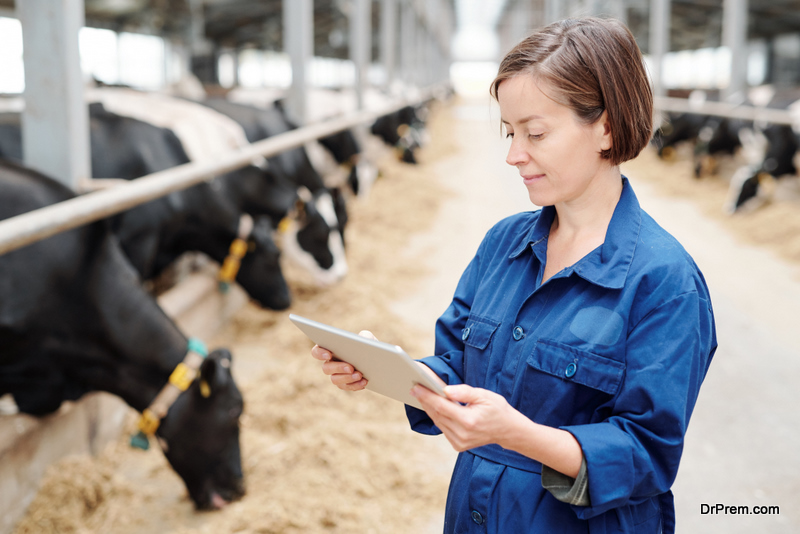Every business has its assets. Assets are any owned properties which produce value; in other words, the things that make a business-owner their money. In the real estate market, the biggest asset is land. For brand management companies, the primary assets are copyrights and trademarks. But when it comes to most farmers and ranchers, the most important asset is often livestock.
Just like house flippers and major corporations, if you’re a farmer or rancher, you want to make the most out of the assets you have. That means not only minimizing costs while maximizing profit, but also fostering sustainability for the future. How do you do that when your money-making assets are living, breathing, and often unpredictable animals? Here are some helpful tips!
1. Use Livestock Management Software
 Technology has helped revolutionize farming and ranching industry in countless ways, from high-speed shipping making it easier to transport meat and dairy products without spoiling to field equipment that does work that once took dozens of men to perform. Some of the greatest technological advancements in industry, however, are the ones hidden behind the scenes.
Technology has helped revolutionize farming and ranching industry in countless ways, from high-speed shipping making it easier to transport meat and dairy products without spoiling to field equipment that does work that once took dozens of men to perform. Some of the greatest technological advancements in industry, however, are the ones hidden behind the scenes.
When it comes to keeping tabs on dozens, if not hundreds, of animals, livestock management software is a true lifesaver. Using RIFD tagging systems and detailed livestock databases, it becomes so much easier to reference, edit, and update animal records anytime, anywhere. This allows business owners to monitor the health, weight, and performance of their livestock with pinpoint precision.
2. Prioritize Animal Health & Nutrition
All assets require maintenance in order to keep things running smoothly. With livestock, a chief priority for business owners should always be the health and wellness of the animals. Underfed animals produce less and what they do produce is often of poorer quality. Sick animals, meanwhile, can spread disease to an entire herd in no time at all.
Implementing proper nutritional practices and instituting precautions to prevent disease are both necessary steps in maximizing the return on livestock investments. Farmers and ranchers should make sure to monitor animal health closely and keep livestock living conditions as clean and secure as possible. Likewise high-fiber content for grazing is key to good nutrition and building disease resistance.
3. Consider Differences Between Breeds
 No two animal breeds are alike, no matter how similar they might seem. Choosing the right breed can often be the deciding factor between the success and failure for a growing farm or ranch. For this reason, it’s vital that business owners fully educate themselves as to the unique attributes, advantages, disadvantages, and needs of the breeds they raise.
No two animal breeds are alike, no matter how similar they might seem. Choosing the right breed can often be the deciding factor between the success and failure for a growing farm or ranch. For this reason, it’s vital that business owners fully educate themselves as to the unique attributes, advantages, disadvantages, and needs of the breeds they raise.
For instance, climate conditions are a major factor in raising livestock, with certain breeds performing better in colder areas or hotter ones. Animals meant to be raised in one kind of climate can actually be more susceptible to sickness when transplanted elsewhere. Even relatively close areas with very subtle differences can have profound effects on livestock health and productivity.
Article Submitted By Community Writer


